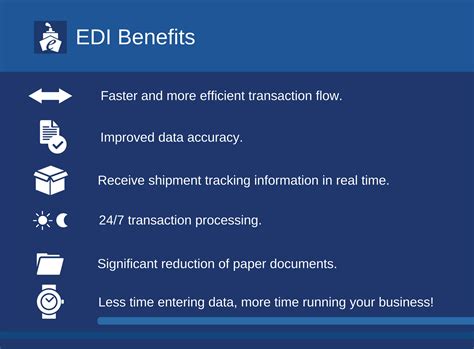 A Comprehensive Guide to Electronic Data Interchange (EDI) for the Floral Industry
A Comprehensive Guide to Electronic Data Interchange (EDI) for the Floral Industry
The floral industry has traditionally relied on manual processes for ordering, invoicing, and shipping flowers. However, the adoption of Electronic Data Interchange (EDI) is rapidly transforming the way businesses in this sector operate. EDI enables the seamless exchange of business documents between trading partners, resulting in significant efficiencies and cost savings.

EDI offers numerous benefits to floral businesses, including:
- Reduced manual labor: EDI automates the processing of orders, invoices, and other business documents, eliminating the need for manual data entry and reducing errors.
- Faster order processing: EDI enables orders to be processed quickly and accurately, reducing lead time and improving customer satisfaction.
- Improved inventory management: EDI provides real-time inventory data, allowing businesses to make informed decisions about stocking levels and avoid overages or shortages.
- Enhanced communication: EDI facilitates efficient communication between trading partners, reducing the risk of misunderstandings and miscommunications.
- Cost savings: EDI eliminates the need for paper, postage, and other expenses associated with manual document processing, resulting in significant cost savings.
In the floral industry, EDI typically involves the electronic exchange of the following documents:
- Orders: Orders are sent from buyers to sellers, specifying the type, quantity, and delivery date of flowers.
- Invoices: Invoices are sent from sellers to buyers, detailing the items ordered, prices, and payment terms.
- Shipping notices: Shipping notices are sent from sellers to buyers, providing information about the shipment, including tracking numbers and estimated delivery dates.
- Payment remittances: Payment remittances are sent from buyers to sellers, acknowledging receipt of payment.
Implementing EDI requires careful planning and execution. Here are some key steps:
- Identify trading partners: Determine which businesses you want to exchange EDI documents with.
- Select an EDI provider: Choose an EDI provider that specializes in the floral industry and offers the services you need.
- Map data elements: Define the data elements that will be included in your EDI documents and map them to your internal systems.
- Test and implement: Conduct thorough testing to ensure that EDI documents are processed accurately and efficiently.
- Not planning adequately: Failing to properly plan your EDI implementation can lead to delays and increased costs.
- Choosing the wrong EDI provider: Selecting an EDI provider that does not meet your specific needs can result in inefficiencies and dissatisfaction.
- Rushing implementation: Inadequate testing and preparation can compromise the success of your EDI implementation.
- Neglecting data integrity: Ensuring the accuracy and completeness of EDI data is crucial for efficient document processing.
- Ignoring security: Failing to implement appropriate security measures can expose your business to data breaches and other risks.
One of the leading floral distributors in the United States has implemented EDI to streamline its operations. The company reported the following benefits after adopting EDI:
- Order processing time reduced by 75%
- Invoice processing time reduced by 60%
- Inventory accuracy improved by 95%
- Cost savings of over $1 million per year
EDI is poised to play an increasingly important role in the floral industry. As technology advances, we can expect to see new applications and benefits of EDI, such as:
- Real-time inventory tracking: EDI will enable businesses to track inventory levels in real time, providing greater visibility and control over their supply chain.
- Predictive analytics: EDI data can be used to perform predictive analytics, allowing businesses to forecast demand and optimize their operations.
- Blockchain integration: EDI can be integrated with blockchain technology to create a secure and transparent platform for exchanging floral products and services.
EDI has the potential to revolutionize the floral industry by streamlining operations, reducing costs, and improving efficiency. By embracing EDI, floral businesses can gain a competitive advantage and position themselves for growth in the digital age.
